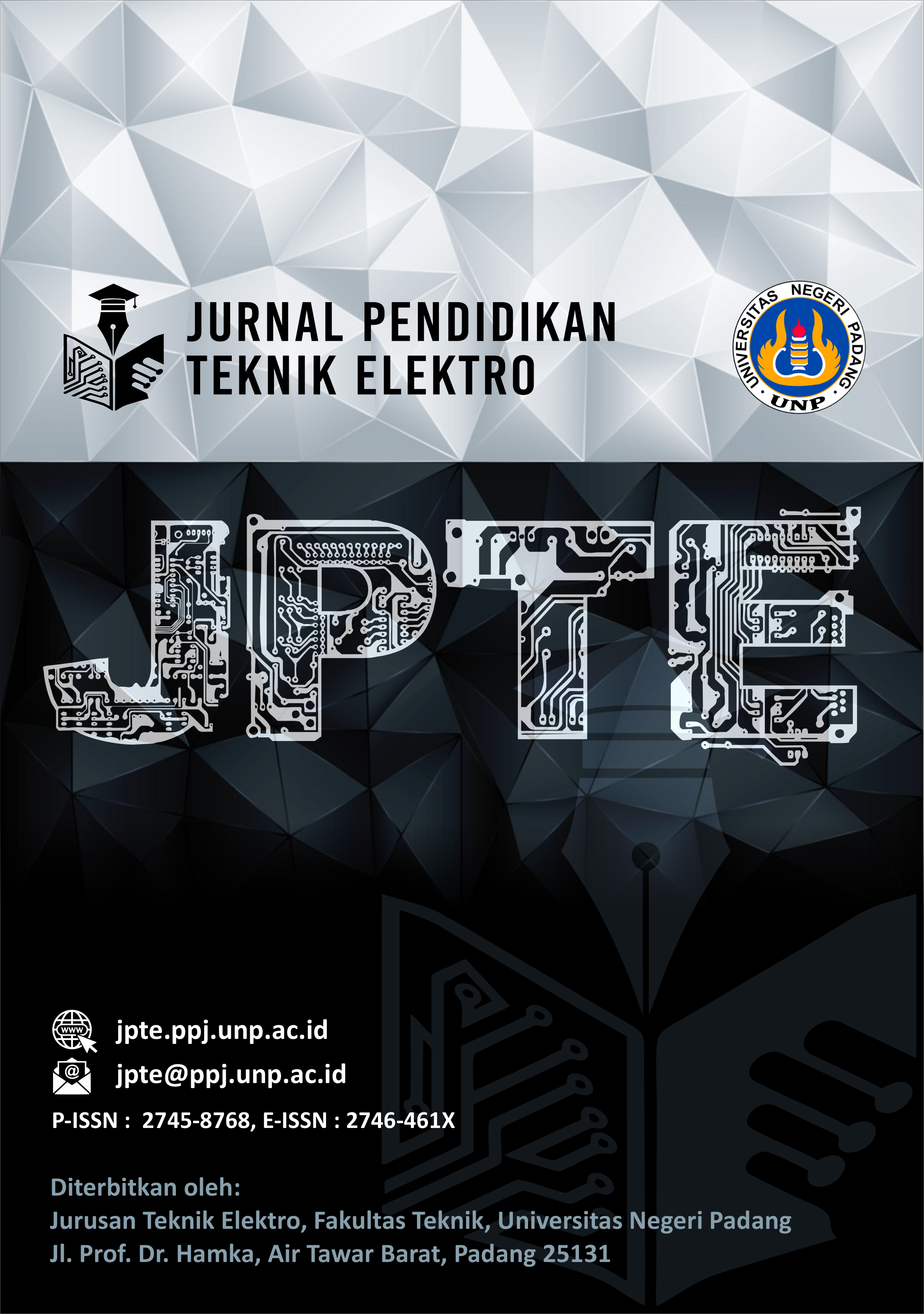Komparasi Hasil Belajar Pendidikan Teknik Elektro Berdasarkan Latar Belakang Pendidikan dan Jalur Masuk
##plugins.themes.academic_pro.article.main##
Abstract
This research is motivated by the low academic performance of students in the Applied Mathematics course. Students admitted through the SNMPTN pathway show lower learning outcomes compared to those admitted through the SBMPTN and Mandiri pathways. These differences in academic performance are concerning, as they may reflect the influence of educational background and admission pathways on students' academic readiness. Therefore, this study aims to analyze differences in student learning outcomes in the Applied Mathematics course within the Electrical Engineering Education Study Program at Universitas Negeri Padang, class of 2022, based on educational background (high school and vocational school) and university entrance pathways (SNMPTN, SBMPTN, and Mandiri). This research employs a quantitative approach with a comparative method. Data were collected through documentation of student grades and analyzed using descriptive and inferential statistical techniques. The findings indicate that there is no significant difference in learning outcomes based on educational background and university entrance pathways. The results suggest that factors other than educational background and admission pathways may play a more dominant role in determining students' academic performance in the Applied Mathematics course.
##plugins.themes.academic_pro.article.details##

This work is licensed under a Creative Commons Attribution 4.0 International License.
References
[2] J. Kemenristekdikti, Peraturan Menteri Riset, Teknologi, dan Pendidikan Tinggi Republik Indonesia Nomor 90 Tahun 2017 tentang Penerimaan Mahasiswa Baru Program Sarjana Pada Perguruan Tinggi Negeri. Kemenristekdikti, 2017.
[3] P. Nurfitriana, N. Prihartanti, and N. Prihartanti, Penyesuaian diri pada mahasiswa tahun pertama di fakultas psikologi Universitas Muhammadiyah Surakarta. Skripsi Sarjana, Universitas Muhammadiyah Surakarta, 2017.
[4] Y. Efronia and R. Mukhaiyar, “Kompetensi dasar dari kurikulum prodi pendidikan teknik elektro Universitas Negeri Padang,” JTEV (Jurnal Teknik Elektro dan Vokasional), vol. 6, no. 1, pp. 179–186, 2020.
[5] A. G. Rahman, R. Refdinal, H. Nurdin, and P. Primawati, “Perbedaan hasil belajar mahasiswa berdasarkan jalur masuk dan asal sekolah pada mata kuliah matematika di Jurusan Teknik Mesin FT-UNP,” Jurnal Vokasi Mekanika, vol. 4, no. 1, pp. 163–168, 2022.
[6] Soegiyono, Metode Penelitian Kuantitatif, Kualitatif dan R&D. Yogyakarta: Alfabeta, 2011.
[7] N. M. Razali and Y. B. Wah, “Power comparisons of Shapiro-Wilk, Kolmogorov-Smirnov, Lilliefors and Anderson-Darling tests,” Journal of Statistical Modeling and Analytics, vol. 2, no. 1, pp. 21–33, 2011.
[8] U. Usmadi, “Pengujian persyaratan analisis (Uji homogenitas dan uji normalitas),” Inovasi Pendidikan, vol. 7, no. 1, 2020.
[9] R. Sundayana, Statistika Penelitian Pendidikan, 3rd ed. Bandung: Alfabeta, 2020.
[10] F. Bustami and D. Abdullah, Statistika. Yogyakarta: Graha Ilmu, 2014.
[11] M. Pulingkong, H. Oddang, and A. Asrial, “Perbandingan hasil belajar mahasiswa berlatar belakang SMK dan SMA program studi pendidikan teknik bangunan Fakultas Keguruan dan Ilmu Pendidikan Universitas Nusa Cendana,” Jurnal Teknologi, vol. 16, no. 2, pp. 45–56, 2022.
[12] E. A. Lubis, Perbandingan hasil belajar mata kuliah pengantar dasar matematika berdasarkan latar belakang pendidikan mahasiswa program studi pendidikan matematika IAIN Padangsidimpuan. Tesis Sarjana, IAIN Padangsidimpuan, 2020.
[13] Y. Syafari and M. Montessori, “Analisis pembelajaran daring terhadap motivasi belajar dan prestasi belajar siswa di masa pandemi Covid-19,” Jurnal Basicedu, vol. 5, no. 3, pp. 1294–1303, 2021.
[14] D. Lestari, H. Anis, and K. Khaeruddin, “Analisis hasil belajar mahasiswa jurusan fisika berdasarkan jalur masuk (SNMPTN, SBMPTN dan Mandiri) Universitas Negeri Makassar,” Jurnal Sains dan Pendidikan Fisika, vol. 14, no. 3, pp. 319–322, 2019.
[15] M. Idris, “Analisis prestasi akademik mahasiswa Teknik Informatika Institut Teknologi Sumatera (ITERA) berdasarkan jalur seleksi masuk perguruan tinggi negeri,” Journal of Science and Applicative Technology, vol. 5, no. 1, pp. 126–130, 2021.

